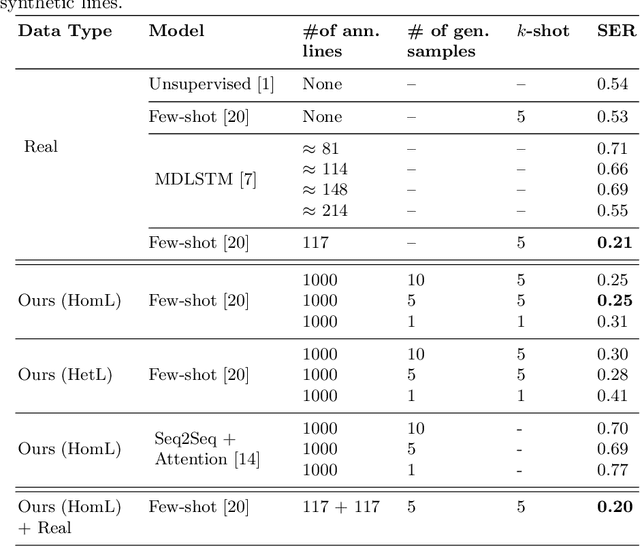One-shot Compositional Data Generation for Low Resource Handwritten Text Recognition
Paper and Code
May 11, 2021



Low resource Handwritten Text Recognition (HTR) is a hard problem due to the scarce annotated data and the very limited linguistic information (dictionaries and language models). This appears, for example, in the case of historical ciphered manuscripts, which are usually written with invented alphabets to hide the content. Thus, in this paper we address this problem through a data generation technique based on Bayesian Program Learning (BPL). Contrary to traditional generation approaches, which require a huge amount of annotated images, our method is able to generate human-like handwriting using only one sample of each symbol from the desired alphabet. After generating symbols, we create synthetic lines to train state-of-the-art HTR architectures in a segmentation free fashion. Quantitative and qualitative analyses were carried out and confirm the effectiveness of the proposed method, achieving competitive results compared to the usage of real annotated data.
 Add to Chrome
Add to Chrome Add to Firefox
Add to Firefox Add to Edge
Add to Edge